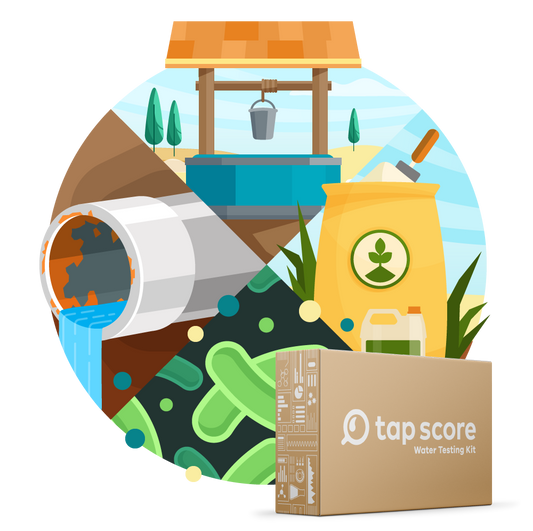
Quick Guide to pH in Drinking Water
Our blog is written by real experts— not AI. Each guide is carefully reviewed and updated based on the latest research. Plus, with no affiliate links, you can count on unbiased insights you can trust.
When it comes to drinking water quality, pH is one of the most important parameters to monitor. pH can affect how your water tastes, reacts with your pipes, and even how certain contaminants behave. Maintaining an appropriate pH can help protect both your plumbing and your health.
In this quick guide, you’ll learn why pH matters, how to test it, and what to do if it’s too high or too low.
Table of Contents:
- What is pH?
- Does pH of Water Impact Health?
- How Do You Test the pH of Water?
- How Do You Change the pH of Water?
- What's the Takeaway?
What is pH?
pH is a way to measure how acidic or basic your water is: A low pH is more acidic, a high pH is more basic. pH is measured on a scale from 0 to 14. Each step on the scale is a tenfold difference in acidity or basicity.
For example, if your water’s pH changes from 4 to 5, this means it has become ten times less acidic (or ten times more basic).
On the pH scale, a value of 7 is considered neutral. Values below 7 are considered acidic, and values above 7 are basic.

What Is the Ideal pH of Water?
The EPA recommends keeping drinking water pH between 6.5 and 8.5. While this recommendation addresses health risks directly, the “correct” pH for drinking water protects plumbing and improves taste.
Why Does the pH of Water Matter?
The pH of water matters for several reasons:
- Plumbing effects: Acidic water can corrode pipes and fixtures; basic water can cause scale buildup.
- Taste, odor and appearance: Acidic water may taste or smell metallic or bitter, and cause discoloration of the water; basic water may taste like baking soda.
- Treatment effectiveness: Some methods, including chlorine disinfection, work best within specific pH ranges.
Does the pH of Water Impact Health?
While pH itself doesn’t typically impact health, it changes how contaminants behave and how effective treatment is. Heavy metals like lead and copper are more soluble at lower pH levels, meaning they remain dissolved and are more likely to be consumed, leading to higher exposure and greater health risks.
Water that is too basic can cause other problems; some contaminants, like ammonia, may be converted into more toxic forms at higher pH levels.
Keeping your drinking water within the recommended pH range of 6.5 to 8.5 helps minimize these risks and support effective water treatment.
How Do You Test the pH of Water?
There are various options available for testing the pH of drinking water, some more accurate and precise than others. These include:
- Test strips
- Liquid reagent tests
- Digital meters
- Laboratory testing

How Lab Tests Differ from Test Strips
How Do You Change the pH of Water?
You can change your drinking water’s pH at home if you need to. To raise your pH (in the case of acidic water) you can consider:
- Neutralizing filters (typically contain calcium carbonate or other carbonate mineral)
- Soda ash or sodium hydroxide injection
What’s the Takeaway
- pH is a measurement of the acidity or basicity of water.
- The ideal pH range for drinking water is between 6.5 and 8.5.
- pH levels can influence how your water interacts with plumbing and how safe it is to drink.
- There are multiple ways to test the pH of water, with varying degrees of accuracy, including test strips, laboratory testing, digital meters, and liquid reagent tests.
- Treatment options are available to raise or lower the pH of your water.
Read More
▾Sources and References
▾- FACTSHEET ON WATER QUALITY PARAMETERS
- pH in Drinking-water
- Sensorex pH Meters
- Which Pond Water Test Kit Wins: Test Strip Or Liquid? - Charlotte Backyard Ponds
- Instrument Choice Cheap pH Testers
- Drinking Water Extension | pH Adjustments
- Secondary Drinking Water Standards: Guidance for Nuisance Chemicals | US EPA









